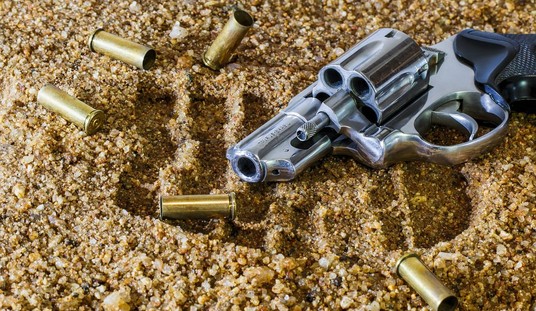
[The following article originally appeared on PoliceOne.com, the online resource for Law Enforcement, and is reprinted by permission of the PoliceOne editorial team. Visit PoliceOne to access articles, information, and resources that help officers across the United States protect their communities and stay safe on the streets.]
I had the chance to test fire Kimber’s Advanced Tactical sniper rifle. In wringing out this new rifle, as well as Leupold’s Mark 4 3.5-10x40mm LR/T M1 scope, I once again touched base with some “great minds” in the police sniper field. Most of these active shooters and trainers lamented their need to “make do” with the sniper ammunition currently available. Even today, the ideal police sniper load escapes us.
The Kimber Advanced Tactical rifle displayed consistent ½ Minute-of-Angle (MOA) accuracy with several factory match grade loads. Many rifles claim this level of accuracy, but I have seen several that wouldn’t deliver on their promise. But do we really need half-MOA accuracy in a police sniper rifle? No, we don’t. Even though a 1-inch group at 100 yards is considered pedestrian to the accuracy shooting crowd, it means every bullet will impact no more than ½ inch from your point of aim. Considering that most police shots are less than 100 yards, a 1 MOA rifle is more than good enough most of the time. The primary advantage to a super-accurate rifle is the confidence it builds in the shooter.
Because of our desire for gilt-edge accuracy, most police agencies use a load with a 168-grain match hollow point projectile. Granted, these bullets do give predictably small groups, but they are pretty lousy in terms of their terminal performance. The 168 hollow point loads almost invariably exit a human target, even though they fragment in the process, and the fragments sometimes turn strange directions. In at least one case, this overpenetration issue reportedly caused the death of a hostage who was not behind the primary target.
Even while the match hollow points overpenetrate on human targets, they generally fail when encountering glass. Simply put, the only thing the match hollow points have going for them is accuracy.
Many experts believe you should choose your sniper load for the terminal ballistics you require and make gilt-edge accuracy a secondary consideration. With a rifle like the Kimber Advanced Tactical, or other super-accurate models, almost any quality .308-caliber load will deliver acceptable accuracy to at least 200 yards.
Jeff Hoffman, the owner of Black Hills Ammunition, is not only a genuine ammunition expert, he is also an active police sniper. Like many other snipers, Hoffman has found that a high percentage of his missions involve aiming at a target behind glass. For that reason, he recommends a “glass load” as the primary sniper round. As a general rule, loads using a bonded core bullet give the best results when shooting through a glass obstacle. Federal Ammunition has long loaded Trophy Bonded bullets in its Tactical line. Black Hills Ammunition loads the Nosler AccuBond bullet in .308-caliber and recommends it as a top glass load. In Black Hills’ testing, the 180-grain AccuBond load has struck within ½ MOA of the shooter’s point of aim (at 100 yards) after passing through laminated windshield glass set at a compound angle — with the target as far as 30 feet behind the glass. That is top-drawer glass performance from a bullet that also gives match grade accuracy. Winchester and Federal also feature AccuBond bullets in one or more of their .308 Winchester loads.
The only problem with a load like the Black Hills 180-grain AccuBond is that it will always exit a human target, posing a threat in a crowded environment. In fact, in 10 percent ordnance gelatin, the AccuBond penetrates deeper than many full-metal-jacket loads. So, it is desirable to have a minimum penetration load available for some circumstances. Hornady loads 110-grain and 155-grain A-Max bullets in its TAP lineup. The Hornady TAP bullets should give drastically reduced penetration and match grade accuracy, but will require different sight settings.
Always being one to throw in my 2 cents, I suggest ammunition makers design a matched pair of loads that will give shallow penetration for those situations where exiting bullets pose a danger to innocents and a trajectory-matched (read: same sight settings) load that will track straight and true after penetrating glass. By using two ballistically identical bullets, we might (I said might) be able to have a glass load using a bonded bullet and a nonbonded reduced penetration load. Nosler makes such a pairing in the AccuBond (glass load) bullets matched with its Ballistic Tip (nonbonded) in 150-grain, 165-grain and 180-grain projectiles. Hornady has similar pairings with its InterBond and SST models in 165 grain and 180 grain.
We already know Nosler and Hornady bullets can deliver match-grade accuracy, so it could be possible to interchange loads with the same sight settings and deliver two radically different levels of terminal performance.
This will require a fair amount of load development to find the right weight combination to produce glass penetration as well as minimum torso penetration from the two loads. It may even require some modifications by the bullet companies, but having interchangeable loads to meet our two very different sniper requirements would be worth the trouble.
Whatever load you choose, consider the terminal effects of the .308-caliber projectiles your snipers fire. The traditional 168-grain match hollow point is one of the worst choices of all for terminal performance.








Join the conversation as a VIP Member